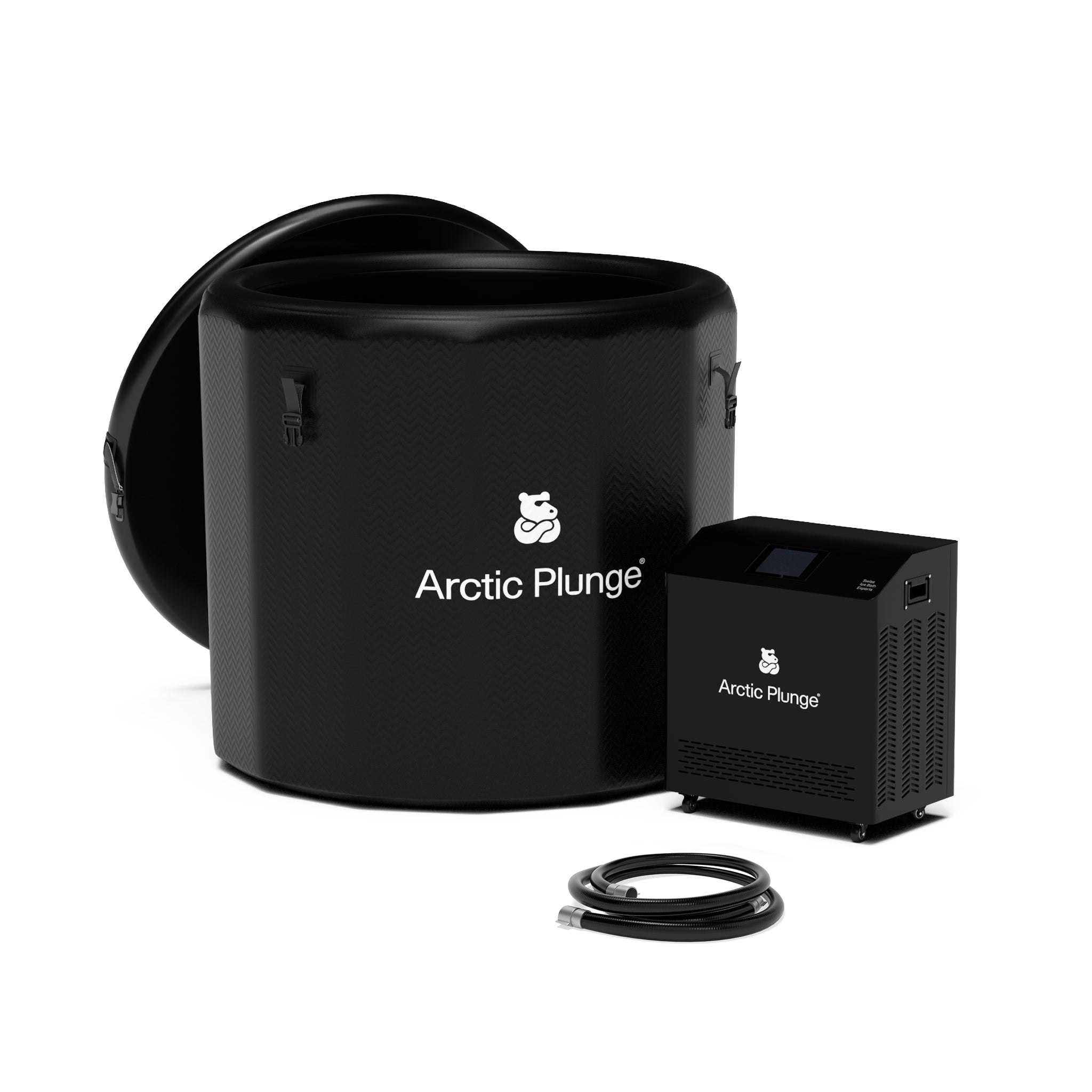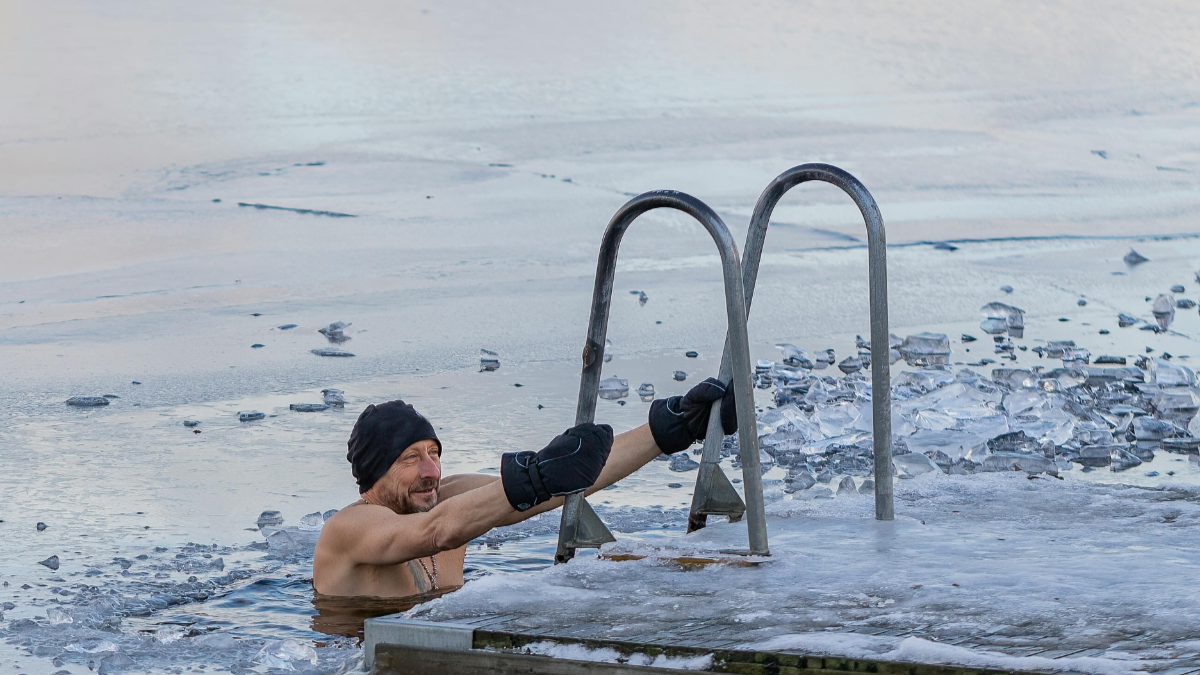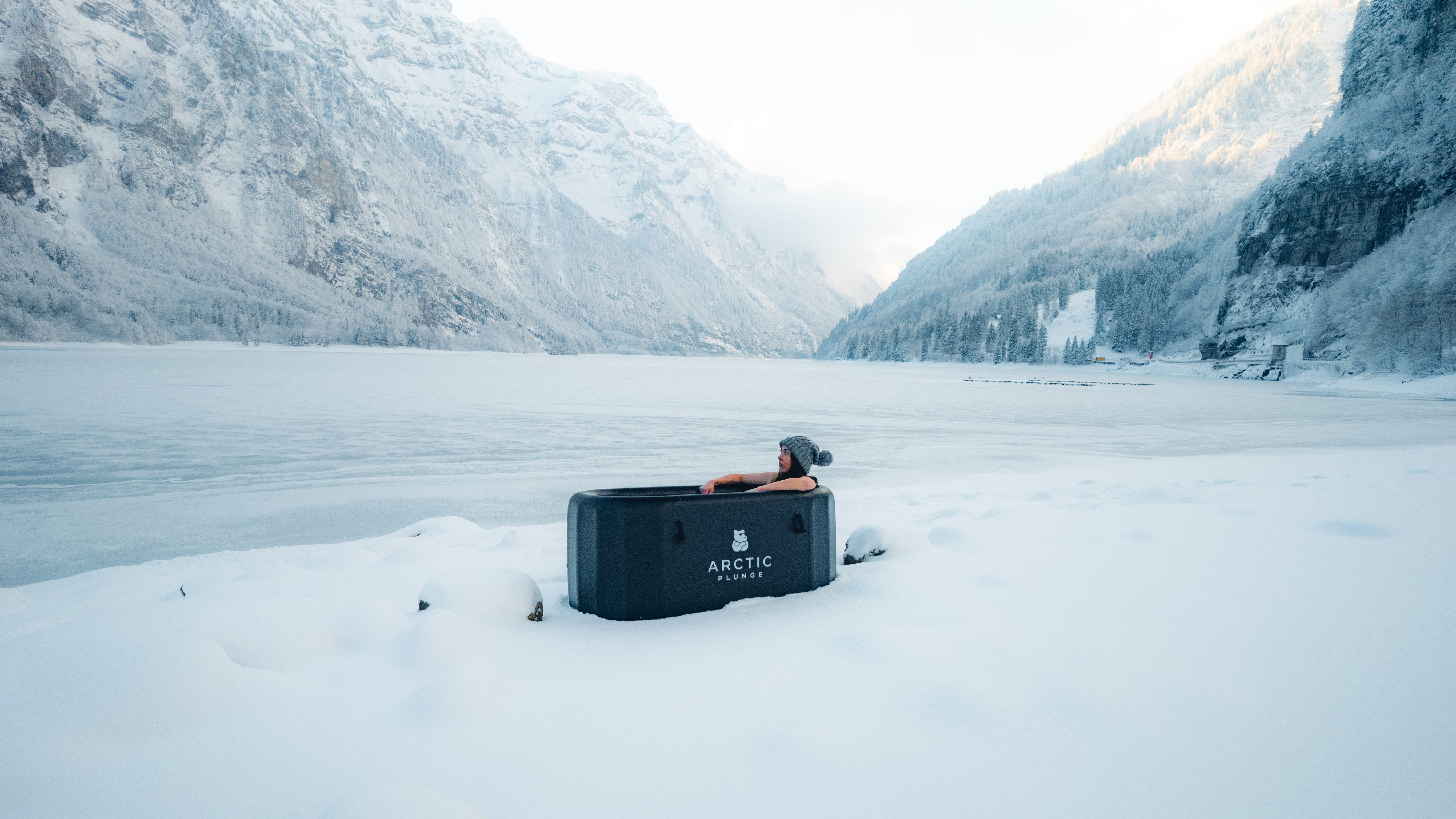In recent years, cold therapies such as ice bathing and cryotherapy have become increasingly popular. Although both methods pursue similar goals (strengthening the immune system, improving blood circulation, promoting regeneration, relieving inflammation, mental clarity), there are significant differences in their application and benefits.
But which suits whom better? And which method could you best integrate into your routine? In this article, we'll show you the similarities and differences between ice bathing and cryotherapy and help you make the right decision for your needs.
What is ice bathing?
Ice bathing is a simple method that involves immersing the body in very cold water (usually around 3-15°C). It has a long history and is traditionally used in many cultures to enhance well-being, regeneration and general health.
The main mechanism behind ice bathing is the cold shock response, where blood is drawn from the outer extremities (hands, feet) into the deeper organs and muscles to retain heat. This not only has an anti-inflammatory effect, but also promotes blood circulation, which speeds up healing and can relieve sore muscles.
There are two different types of ice baths: traditional and modern. In traditional ice baths, a tub is filled with cold water and ice to reach the desired temperature. This is usually very time-consuming and tedious, as you have to constantly add ice to reach the desired temperature. In addition, the tub must be large enough to immerse yourself in and you need a temperature measuring device. All in all, the traditional version is not very practical.
Fortunately, there are now modern types of ice baths that are much easier and more convenient to use. They also have precise temperature control and built-in filter systems. This eliminates the need to monitor the temperature and the use of ice. You can simply fill the tub with water, set your desired temperature and get started.
If you are interested in a modern ice bath that provides you with a pleasant and time-saving experience, then take a look around or let us advise you.
Benefits of ice bathing:
- Reduction of muscle inflammation and damage
- Relief from pain, especially from sports injuries
- Improvement of blood circulation
- Promotes mental strength and stress reduction
- Support regeneration after intensive training
- possible free of charge
What is cryotherapy?
Cryotherapy is a modern cold therapy in which extremely low temperatures are used (from -110 to -180°C). A specially developed cabin or whole-body device filled with liquid nitrogen and cooled air is used for this purpose. During the treatment, the patient usually wears only the most necessary clothing (including gloves, socks and a hat) to protect the most sensitive extremities. The cold air then has a targeted effect on the skin and muscles.
The extremely cold temperatures trigger an immediate reaction in the body. Blood pressure rises, blood circulation is stimulated and inflammation is reduced.
Advantages of cryotherapy:
- fast, targeted regeneration for the entire body
- less uncomfortable as you are only exposed to the cold for a short period of time
- Promotes metabolism and cell regeneration
- supports skin health and reduces skin irritation
- Potentially more suitable for people with limited mobility or people who do not want to take long baths
The comparison: ice bathing vs. cryotherapy
1. Intensity and duration:
With ice bathing and cryotherapy, the duration is similar, but different temperatures and stimuli are used. While cryotherapy works with extremely low temperatures in a short time, the water in the ice bath provides direct, intensive cold contact. Despite the colder environment, cryotherapy is often perceived as less intense as there is no direct exposure to water.
2. Temperature
In an ice bath, the water temperature should be between 3-15°C. In cryotherapy, on the other hand, the body is exposed to extremely cold air temperatures of -110 to -180°C.
3. Access and availability:
Ice baths are relatively easy to do yourself at home, whether in a tub of ice cubes or in cold water. However, cryotherapy requires special equipment that is only available in specialized clinics or wellness centers.
4. Locality of the effect:
Ice bathing acts on the whole body, whereas cryotherapy focuses on the entire body surface, but in many cases the cold acts on the body in a targeted and more intensive way. In cryotherapy, the focus is more on the deep tissue layers and blood clotting.
5. Personal preferences and comfort:
Ice bathing is not suitable for everyone, as it requires a psychological overcoming to spend long periods of time in icy cold water. Cryotherapy, on the other hand, is often perceived as more pleasant, as you are only in the chamber for a short time and are less confronted with direct contact with the water.
6. Cost and convenience:
Everyone can afford ice bathing, as you can either do it at home and therefore only have to calculate the cost of the water used and any ice cubes, or by going to a cold, natural body of water. The cost of a single cryotherapy session in Switzerland, on the other hand, is around CHF 50-120 and it is not possible to carry it out from home.
Who is what suitable for?
Ice bathing:
- ideal for people who are looking for an intense cold experience and want to benefit from the long-lasting regeneration benefits
- for athletes who need to recover quickly after strenuous training sessions or competitions
- if you are a nature lover and prefer access to a natural water source
- if you want to strengthen yourself mentally and improve your endurance
Cryotherapy:
- for people who are looking for a quick, professional solution and do not have cold water sources available
- if you suffer from chronic pain or skin irritation and want to try a non-invasive therapy
- for those who do not want to have so much physical contact with the cold
Conclusion
Ice bathing and cryotherapy are both effective cold therapies that benefit from the advantages of cold in different ways. If you're looking for a simple, natural method and don't mind the challenge of the cold, ice bathing is an excellent choice. On the other hand, if you prefer a quick, effective treatment in a controlled environment that requires little effort, cryotherapy could be the right option for you.
Ultimately, the choice depends on your personal goals, preferences and access to each option. Both methods are excellent for promoting regeneration, reducing inflammation and increasing overall well-being. So choose the method that best suits your lifestyle and needs!







Leave a comment
This site is protected by hCaptcha and the hCaptcha Privacy Policy and Terms of Service apply.